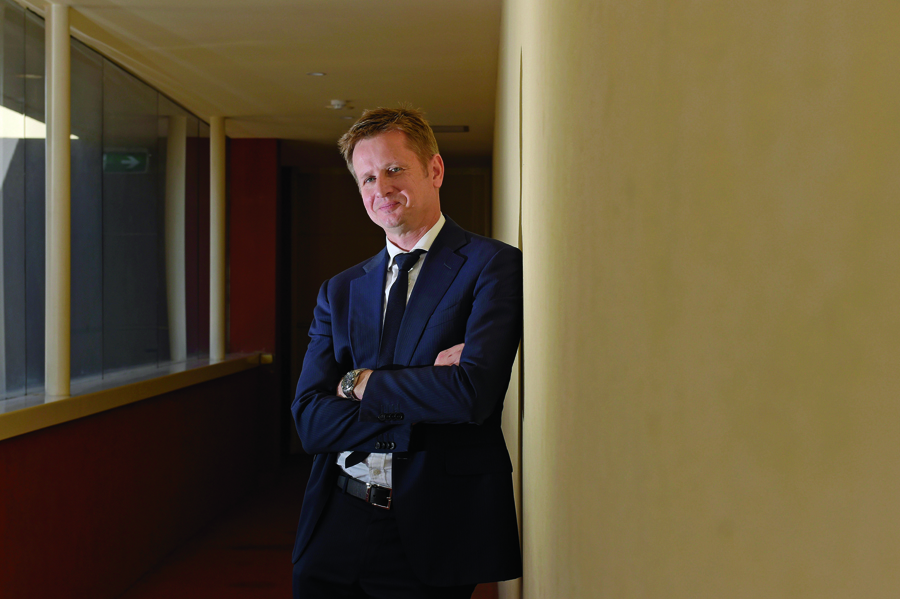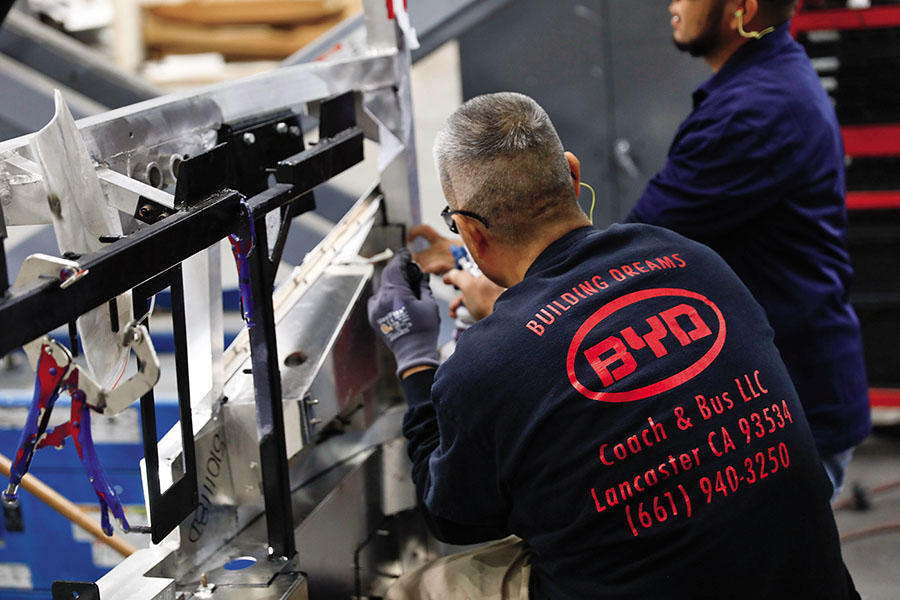
Global prices of cobalt have tripled in the past year. Here's why
Hint: It's a critical element of Lithium-ion batteries
 Ken Brinsden, Pilbara’s man in Perth
Ken Brinsden, Pilbara’s man in Perth Image: Carla Gottgens / Bloomberg via Getty Images
Fueling future generations of electric vehicles is making some mining entrepreneurs rich as demand grows for critical metals, such as lithium and cobalt. But as with all commodity booms, there are early signs of a shortage turning into a flood, with a predictably depressing effect on prices.
Lithium is the metal most likely to be hit by a surge in production and a fall in price, especially if demand for electric cars does not match optimistic forecasts. Ironically, it could be a shortage of cobalt that delays the production of the lithium-ion batteries needed to power electric cars and a range of other products, such as smartphones and household appliances.
Despite their name, most lithium-ion batteries also require cobalt and graphite to do their job of retaining and discharging electricity, and while lithium and graphite are plentiful, it is cobalt that has manufacturers of battery-based products worried.
Carmakers, such as Germany’s BMW, and electronic gadget makers, such as Apple, are scouring the world for supplies of cobalt, a rare metal that has tripled in price over the past year to $80,000 a tonne, with 60 percent of global supply coming from the bloody Democratic Republic of Congo.
Glencore, the world’s biggest producer of cobalt, has been in talks with Volkswagen and Tesla about future supplies of the metal, but its chief executive, Ivan Glasenberg, told The Times of London that supplies of cobalt were “relatively constrained” because it could not be mined like lithium, coming only as a by-product of mining copper and nickel. “We have seen the investments that car companies are making in electric vehicles,” Glasenberg said. “They will need battery supply. It will require a lot of cobalt, and we all know the geological scarcity of cobalt.”
Guessing which way the battery boom might evolve is causing headaches for miners as well as consumers of battery metals as they juggle the tricky business of matching supply with forecasts of demand that may or may not be correct.
 Chinese firms such as BYD seek to lead EV transformation
Chinese firms such as BYD seek to lead EV transformation Image: Patrick T. Fallon / Bloomberg via Getty Images
Australian miners have been quickest to expand production of lithium to meet a short-term shortage of the metal, largely because their mining method is simplest—dig and deliver a part-processed product called spodumene concentrate (which is 6 percent lithium)—whereas South American lithium, which once dominated supply, has a more complex production process based on extracting the metal from brine lakes.
For Chris Ellison, managing director of ASX-listed Mineral Resources, lithium has been the key to more than doubling in nine months the value of his 12.3 percent stake in the business. Worth $160 million last June, his holding was recently valued at $330 million. (Ellison declined to be interviewed for this story.) Shareholders in Pilbara Minerals, a company scheduled to start lithium production later this year, have seen the value of their investment rise by 160 percent over the past eight months as Pilbara’s market capitalisation has grown to $1.1 billion.
Ken Brinsden, Pilbara’s managing director in Perth, is so confident his company won’t be late to the lithium party that he has just approved a second-stage processing plant that will double the company’s production capacity even before output starts at the first stage. “I strongly believe that comments about a lithium-supply glut are misreading the situation and grossly underestimating the speed at which demand is expanding,” Brinsden says.
That comment was made after investment bank Morgan Stanley warned that a glut of lithium could cause a 45 percent fall in the price over the next three years. “Rising demand for lithium-ion batteries for electric vehicles has seen lithium prices more than double, and invited new low-cost supply,” its analysts wrote in a report. “Our new work suggests lithium prices could fall by 45 percent by 2021,” the report states. “The market is not discounting this.”
Rival Citibank disagrees. Two weeks before Morgan Stanley said the market was not discounting a glut, it published a lithium report with the headline: “Supply concerns more than priced in.”
Interestingly, while Morgan Stanley said the price of lithium carbonate, the primary battery-grade form of lithium, could fall from $13,375 a tonne this year to $7,332 a tonne in 2021, Citi also sees a fall in the long-term price to $7,500 a tonne, but added that two Australian producers, Orocobre and Galaxy Metals, had seen share prices that already reflected close to that level.
Preparation for a surge in demand for electric cars appears to be the reason for the rush to secure lithium supplies. Asian buyers of lithium are leading the charge. Chinese lithium processor Ganfeng Lithium and carmaker Great Wall are major Pilbara customers and have provided funds for the second-stage expansion, while big Korean steelmaker Posco has signed a deal with Pilbara to feed its own plans to supply battery makers.
Albemarle of the US, producer of chemicals with lithium interests at home and abroad, is doubling capacity at the Greenbushes mine it co-owns with China’s Tianqi Lithium in Australia and is revealing plans to expand further before the first expansion is complete.
Even if the lithium market is flooded, the challenge for companies that base their products on rechargeable batteries is to find more cobalt, preferably not in Congo, or find a replacement for cobalt in batteries. Worst case, a new generation of electric vehicles could stall.
(This story appears in the 13 April, 2018 issue of Forbes India. To visit our Archives, click here.)
Post Your Comment














